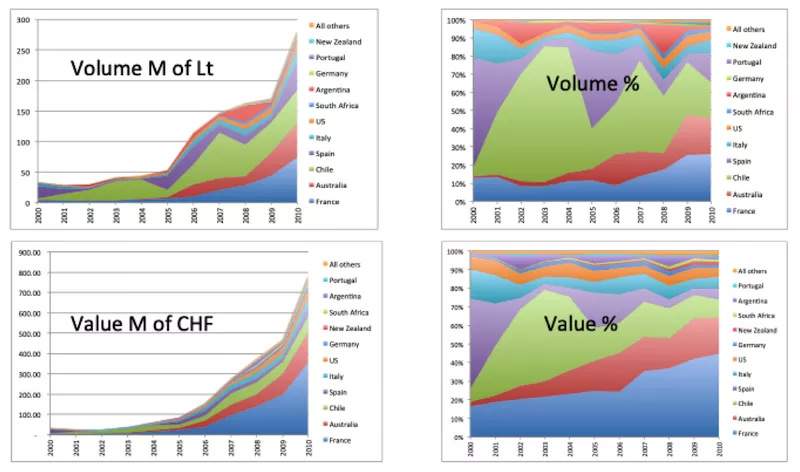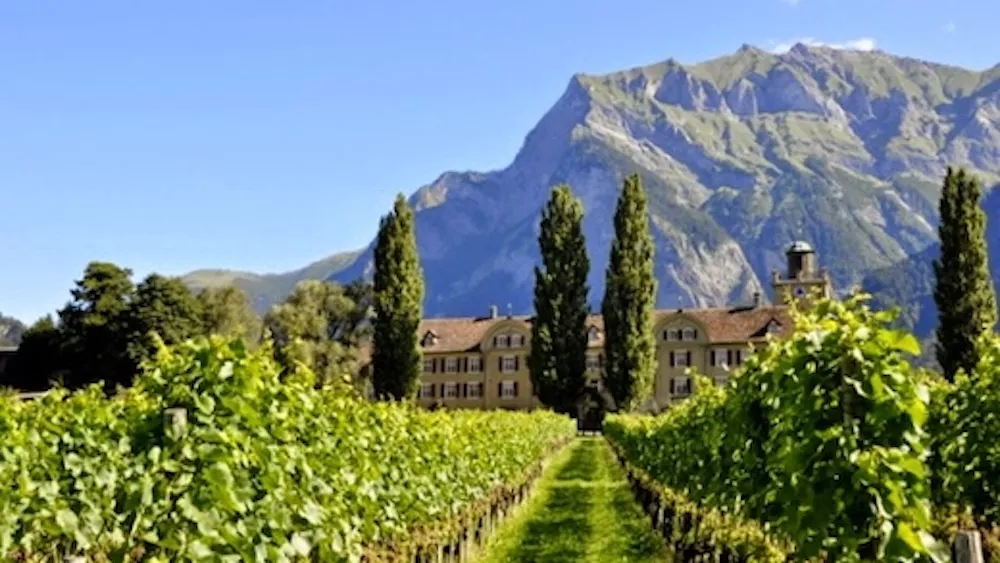Wine consumption in China
- Research
Swiss Fine Wine est un groupe d'entrepreneurs suisses rassemblés pour promouvoir les meilleurs producteurs de vin suisse autour du monde. Eudis-Consult a fournit une étude pour comprendre les tendances et le potentiel du marché chinois.
Cette recherche s'appuie sur des données d'Euromonitor, une étude "passeport international" publiée en août 2013
Wine market evolution
Until 2012, the huge Chinese market has been growing steadily due to a general economic improvement. In 2012 the grape wine consumption represented 50% of the total wine market and overtook the traditional rice wine market. The later continues to grow but slower.

- Total Wine volume sales in China grew by 21% CAGR between 2009 and 2013

- Red wine is clearly a consumer preference with 75% market share

- 55% of grape wines are drunk on trade (restaurants)

- Eastern China (including Shanghai) is the main grape wine drinking region, followed by the North (including Beijing)

- France has established itself as a leading wine country in the mind of Chinese consumers.
Consumer trends and behaviour

Both men and women enjoy wine.
An increasing number of young consumers are developing a more sophisticated palette and therefore consume more wine. The key consumers of wine tend to be the affluent.
Wine is a status symbol
Wine is a status symbol, synonym to sophistication and class. Still red wine in particular enjoys an unparalleled appeal with all consumers as it is perceived as auspicious and healthy.
Champagne through a long association with celebration, luxury and exclusivity, continues to appeal to the growing and affluent middle class.
Consumers trade up
Consumers are trading up to better quality products. In fact offering premium wines at lower prices would reduce their exclusivity and appeal.
Wine is part of dinning out
Sales in restaurants (on-trade) exceed retail sales (off-trade) as consumers socially tend to dine out and spend more with friends or clients.
Wine is a popular gift
The red colour is auspicious in Chinese culture, making red wine a popular choice of gift especially during the Lunar New Year celebrations.
Fake or adulterated wine
Fake and adulterated wine are a growing concern both from the consumer and the policy maker point of view. Adulterated or fake wine tends to drive Chinese consumers towards imported wine (foreign labels) and aged wine (perceived as a sign of quality)
Drinking and driving
In 2011 the Chinese state has imposed a new and stricter drinking and driving law associated to more severe sanctions, which had an effect on consumer behaviours.
Outlook
China will grow from 5th to 4th world position as a grape wine producing country in the coming years. Wine consumption will continue to grow although slower. This will drive local production as well as imports.

Young, rich and fabulous
Growth of imported wine will be supported by the general assumption that foreign wines might be safer and as well as the status brought by drinking foreign wines.
Growing sophistication
Consumers are becoming more discriminating. The rising influence of connoisseurs will lead consumers towards higher quality products for personal enjoyment and gifts.
Growth
Between 2011 and 2016 wine sales are expected to grow by 14% CAGR in volume and the average price per unit is expected to grow too.



